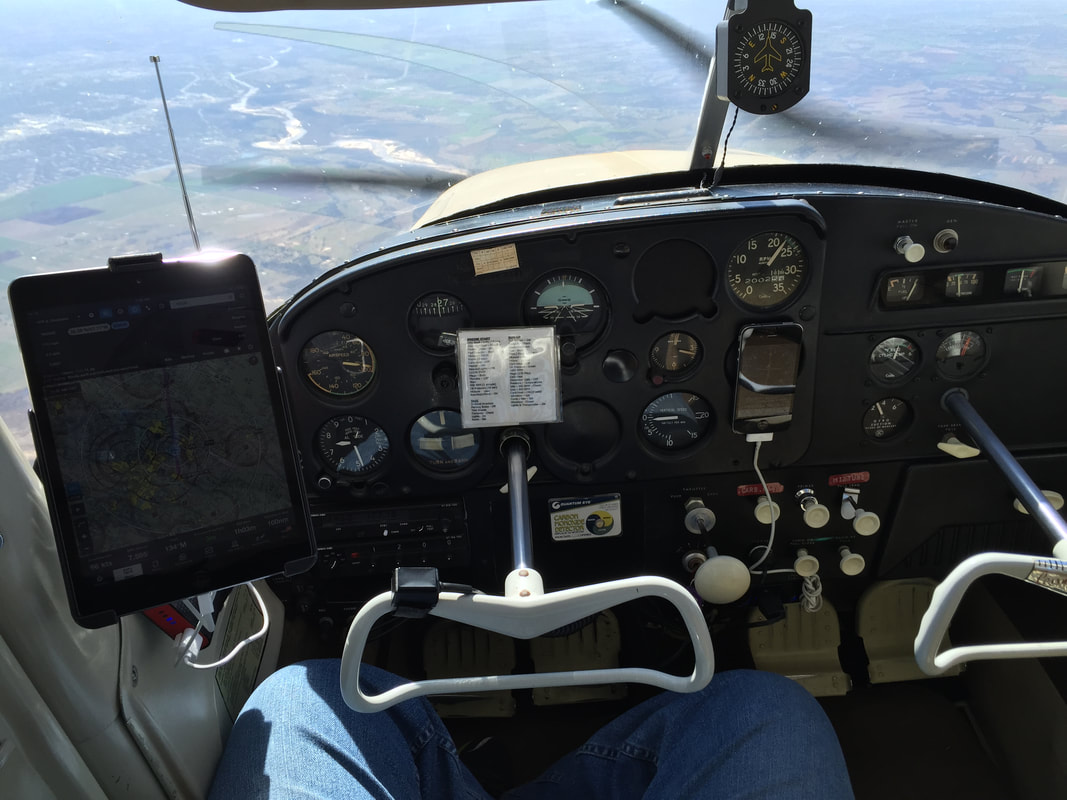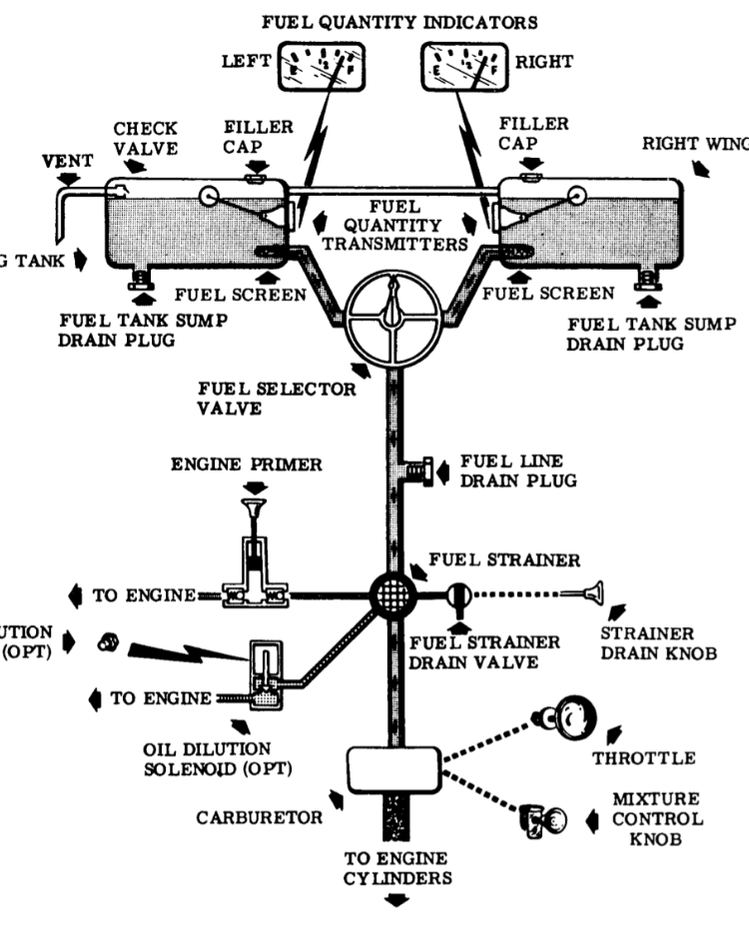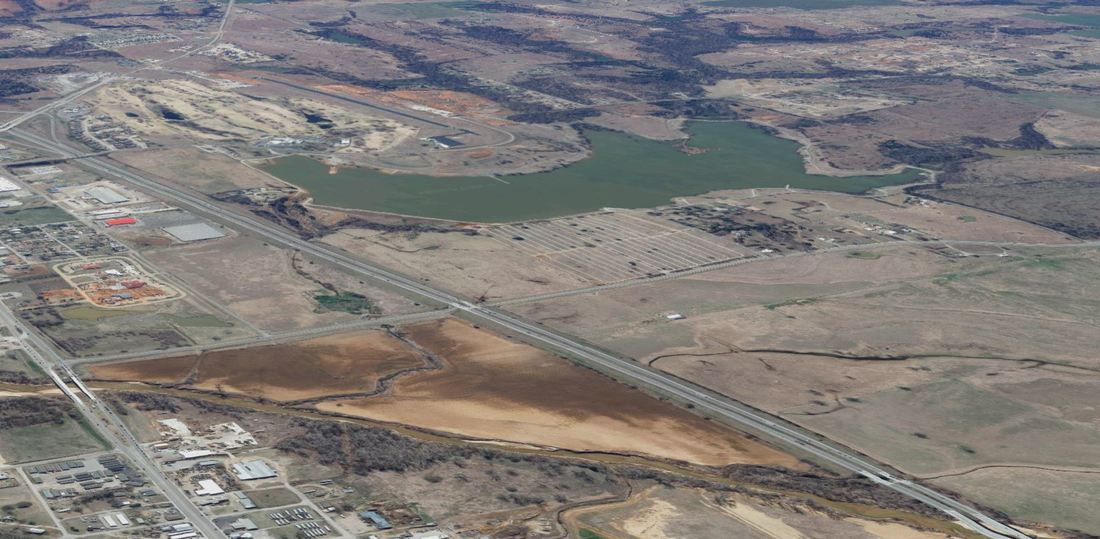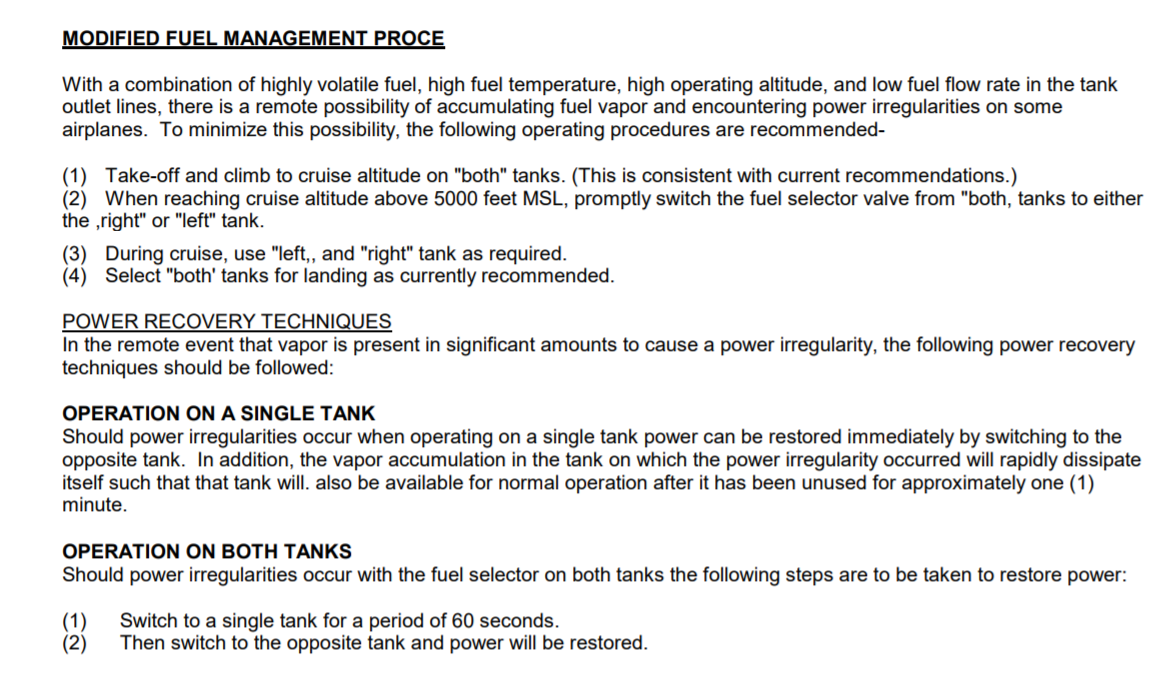With ATC watching for traffic and aware of my position and situation, I could concentrate more on the problem at hand. What was I missing? "It must be fuel," I thought. "Tanks are full. Fuel selector on 'Both.' Mixture rich.... Nothing is helping. So what now?" "Fly the plane. Fly the plane. Fly the plane. Trim for best glide. Set a direct heading to the airport. You get one shot. What are the winds? Manage energy... Uhm. Oh sh*t, there's a damn lake at the end of the runway! You must be kidding." Let's just say that I approached high and dropped the flaps at the last minute. I may have landed long. But I wasn't wet! Or worse! Right before touching down (yes, on the runway) I remember thinking about how I was going to have to PUSH the plane from the runway to get it clear. But, that wasn't the case. As soon as the wheels touched the runway, the engine started and ran perfectly. Unbelievable. I taxied to parking. Fifteen minutes later, I was able to think straight, get my legs under me and exit the airplane. THE CAUSE If you carefully read the POH for early Cessna 172s, the POH cautions you about flying on both tanks when cruising at altitudes over 5000 ft. Doing so may cause "power irregularities" (A.K.A. engine failure). But I guess this is okay if it is in the POH. Just switch to one tank, ignore the sputtering, glide for 60 (very long) seconds, then switch to the other tank and hope the vapor has cleared and the engine restarts. That is why many early Cessna 172s have a placard on the fuel selector (between the seats, out of sight) that says something to the effect of "Use single tank above 5000 ft." Yes, on those models, it matters. LESSON LEARNED The decision to fly on Left, Right, or Both may not be a simple judgement call. The decision shouldn't be based on the consensus opinion of you and your buddies. And the proper option may not even seem logical. You must read the POH, ADs, and ACs for your aircraft and follow their guidance. Your life may depend on it. RESOURCES FAA: https://www.faa.gov/regulations_policies/airworthiness_directives Example C172 POH: http://rob.com/matt/manuals/172_poh_59.pdf Actual Fuel Management Procedure - 1959 Cessna 172
|





 RSS Feed
RSS Feed


